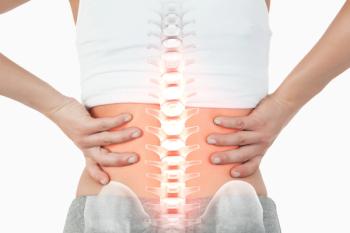
In addition to different dosage forms of levodopa—the current standard of care for Parkinson disease—emerging trials are also examining alpha-synuclein, an abnormal protein that may be involved in the pathogenesis of the condition.


In addition to different dosage forms of levodopa—the current standard of care for Parkinson disease—emerging trials are also examining alpha-synuclein, an abnormal protein that may be involved in the pathogenesis of the condition.

A machine learning approach that works to identify mitochondrial impairments, a potential mechanism underlying the pathogenesis of Parkinson disease (PD), accurately distinguished between patients with PD and healthy controls.

Patients with Parkinson disease (PD) who do not experience tremor were found to show improvements in reward learning after taking dopaminergic medication, while those with PD and tremor exhibited no benefit in reinforcement learning.

Michael S. Fitts, assistant dean for user access and diversity at the University of Alabama at Birmingham, discusses misconceptions of Parkinson disease related to race and age, as well as advice for patients in their treatment journey.

Individual-level low socioeconomic status (SES) was found to be significantly associated with increased mortality in Korean patients with Parkinson disease, whereas regional-level SES was not.

Researchers discuss the development and potential of stem cell–based therapies in the treatment of Parkinson disease.

Michael S. Fitts, assistant dean for user access and diversity for The University of Alabama at Birmingham, discusses reporting on the progressive symptoms of Parkinson disease, and the impact of nonmotor symptoms of anxiety and depression.

A skin test to detect clumping of alpha-synuclein, an abnormal protein suggested to have a central role in the pathogenesis of Parkinson disease, may assist in improving earlier detection of the condition, according to study findings.

Air pollution was found to be significantly associated with an increased risk of hospital admissions for several neurological disorders, including Parkinson disease, Alzheimer disease, and other dementias.

In assessing symptoms of Parkinson disease exacerbated by the coronavirus disease 2019 (COVID-19) pandemic, nonmotor neuropsychiatric and automatic symptoms were noted to particularly affect both patients and their respective caregivers.

Michael S. Fitts, assistant dean for user access and diversity for The University of Alabama at Birmingham, speaks on his experience with early-onset Parkinson disease and the challenges and misconceptions associated with the condition.



Researchers examine the clinical and pathophysiological mechanisms underlying pain in Parkinson disease.

Spinal cord stimulation was found to decrease pain and reduce motor symptoms of Parkinson disease as both a singular therapy and as a salvage therapy after deep brain stimulation therapies proved ineffective.

Researchers assess the optimal balance of levodopa in patients with Parkinson disease (PD), which wanes in efficacy as PD progresses and can contribute to uncontrollable, involuntary bodily movements if given in too high of a dosage.

Amid the COVID-19 pandemic, health professionals reported difficulty accessing Parkinson disease medications, particularly in low-income countries, leading to greater disability of patients as a result.

Researchers present a novel approach to identifying molecules associated with the progression of Parkinson disease and other neurodegenerative diseases.

People with Parkinson disease (PD) were found to be more likely than those without the condition to have orthostatic hypotension, a sudden drop in blood pressure upon standing that can exacerbate the risk of falling.

A review discusses what immunotherapies are currently being evaluated to target α-synuclein, an abnormal protein suggested to have a central role in the pathogenesis of PD.

Exercise was identified as a potential intervention to improve quality of life and heighten immune response among patients with Parkinson disease.

Among patients with advanced Parkinson disease and motor fluctuations, a combination of levodopa/carbidopa/entacapone was shown to improve motor and sleep symptoms.

A healthy diet consisting of fruit, vegetables, and whole grains in middle age may be associated with fewer non-motor symptoms known to precede the diagnosis of Parkinson disease, according to study findings.

There was no statistically significant difference in patient-reported outcomes for short-term integrated palliative care compared with standard care in those with long-term neurological conditions.

Researchers explore the standard pathophysiological and molecular linkages between Parkinson disease (PD) and diabetes, as well as the role of diabetes therapies in the pathological pathways and progression of PD.

259 Prospect Plains Rd, Bldg H
Cranbury, NJ 08512
© 2025 MJH Life Sciences®
All rights reserved.
